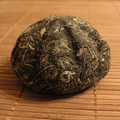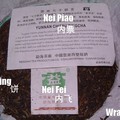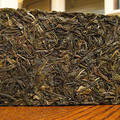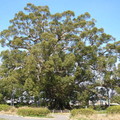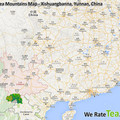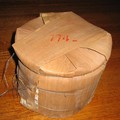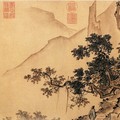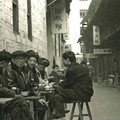Lao Man'e: A Bulang Tea Village - Brian S. Kirbis
„ “

Video Tags: Pu-erh, China, Bulang, Tea production, Gushu
- Discussion: 0 comments
- Write a comment
Teas - Pu-erh
2013 Chawangpu Bada Zhang Lang Xiao Bing
 1 review
1 reviewNicely processed and completely manually produced tea from Bada mountains. The tea is...
2015 Spring Man Nuo Gu Shu Mao Cha 50g
 0 reviews
0 reviewsMan Nuo ancient tea gardens, at an altitude of 1266 meters. The tea trees are really...
2006 Bailong TF Jinggu "Da Bai Hao" 357g
 1 review
1 reviewJinggu area, it's famous for one of varietal tea trees – Da Bai Hao – “Big White...
2008 Xiaguan FT Xizi (Happy) Tuo Cha Raw
 1 review
1 reviewXizi tuo is one of famous Xiaguan Fei Tai products. Used high quality blend of 1-3...
2006 Longyu Brand Bulangshan Jin Cha Raw
 1 review
1 reviewRaw Jin Cha is especially for Tibetan market, used to be mixed with milk, it is very...
2012 Bulang Man Xin Long Wild Arbor Raw
 1 review
1 reviewProduct name (stamp on the wrapper) : Qi Zi Yuan This cake come from...
Quotes - Pu-erh
„The terms "Xiao shu" (small tree) and "tai di" (terrace plantation) are often interchangeably used, but they should be given separate meanings. "Tai di" connotes high intensity farming, with the entire slope cleared & terraced to plant hedgerows & use of pesticide & fertilizer. But in many gu shu growing villages, there are also new tea plantations which are too young to be called gu shu (ie. less than 100 years old), but they aren't exactly "tai di" either. Many of these plants are growing next to old trees, in a bio-diverse forest clearing, with lots of space around them, not all are sprayed & fertilized. In the future, they will grow into "gu shu", until then we should call them "shen tai xiao shu" (naturally grown small trees)“
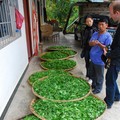
Quotes Tags: Pu-erh, Gushu, Tea production
Video - Pu-erh
Teas
2012 Chawangpu Jingmai Gu Shu Xiao Bing Cha
 1 review
1 reviewThis tea is from Jingmai Da Zhai, grown on the Da Ping Zhang area, and is considered some of the finest...
2011 Mengmao Lao Shu Ye Sheng Xiao Bing 100g
 1 review
1 review2011 Spring harvest. This material come from Baoshan area, 2600 meters high mountain closed with Mengmao...
2013 Early Spring Premium Yunnan Mao Feng
 1 review
1 reviewGrade: AA+ Cultivar: Yunnan Da Ye Harvest area: Si Mao, Yunnan Yunnan green tea produced...
Theme
Tea by region
We will help you with tea selection.
Do you like quality loose tea?
We will help you to find the right one for you. Be inspired by tea ratings of other tea lovers. Rating stars could help you.


Review your cup of tea.
Review the tea you are drinking and help other tea lovers to find the right cup of tea.



Quotes
„Genmaicha (玄米茶, brown rice tea) - Bancha (sometimes Sencha) and roasted genmai (brown rice) blend. It is often mixed with a small amount of Matcha to make the color better.“



 Shops
Shops Share on Facebook
Share on Facebook






